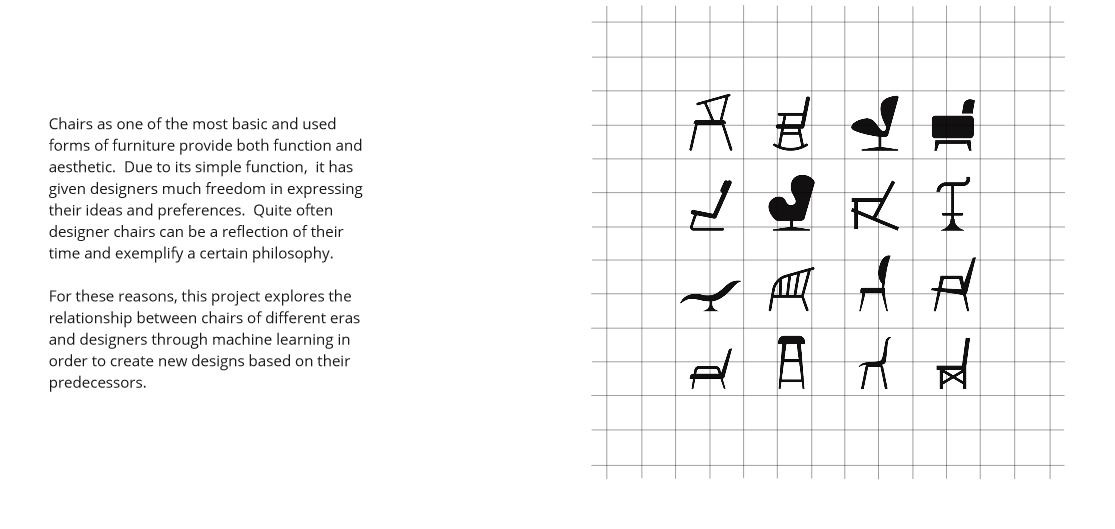GENERATIVE PLANNING
CH-AI-R CONVERGENCE
INTRODUCTION: ‘Chairs are important witnesses of their time’
Chairs as one of the most basic and used forms of furniture provide both function and aesthetic. This project explores the relationship between chairs of different eras and designers through machine learning in order to create new designs based on their predecessors.
CHAIR DESIGN & ARCHITECTURE
The link between architect and chair design has been one exemplified by dozens of famous architects over the decades. Their design of the chair provides an insight in both their philosophy and personal quality in a form very easy to understand.
Through careful curation of these design and interpolation with the use of AI algorithms, new modern designs can be invented which have never been thought of before.
 Source pictures chair design & architecture:
Source pictures chair design & architecture:
SCOPE OF PROJECT
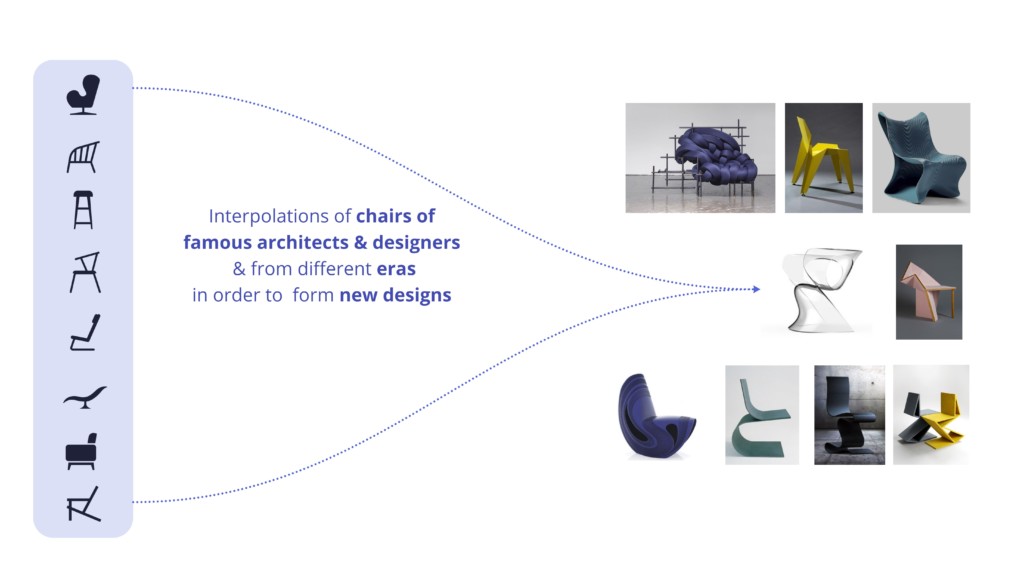
DATASET CREATION: Chair voxelization
We will take you through 6 main chapters leading to the creation of the new chair designs through the use of 3d GAN models.
WORKFLOW
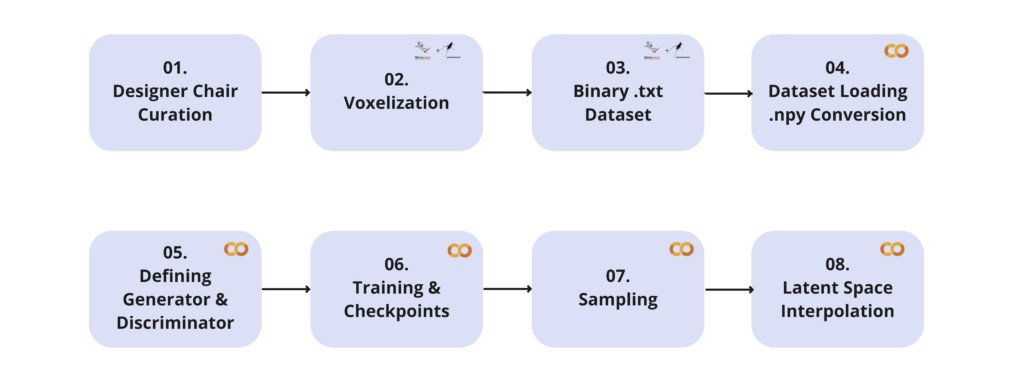

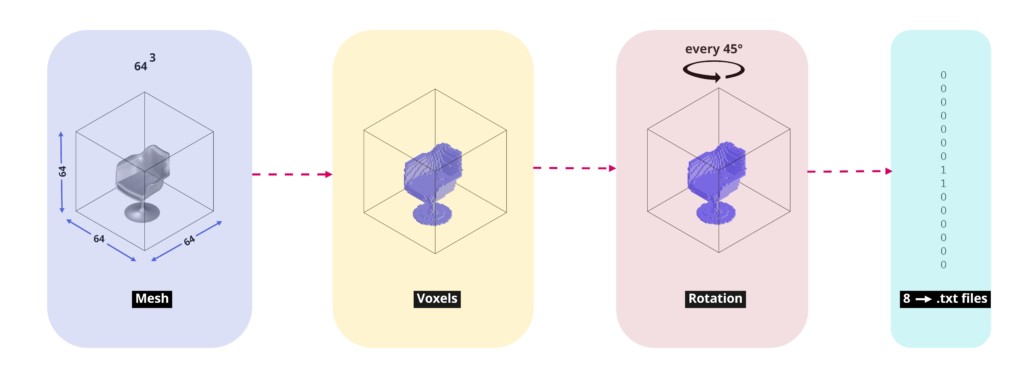
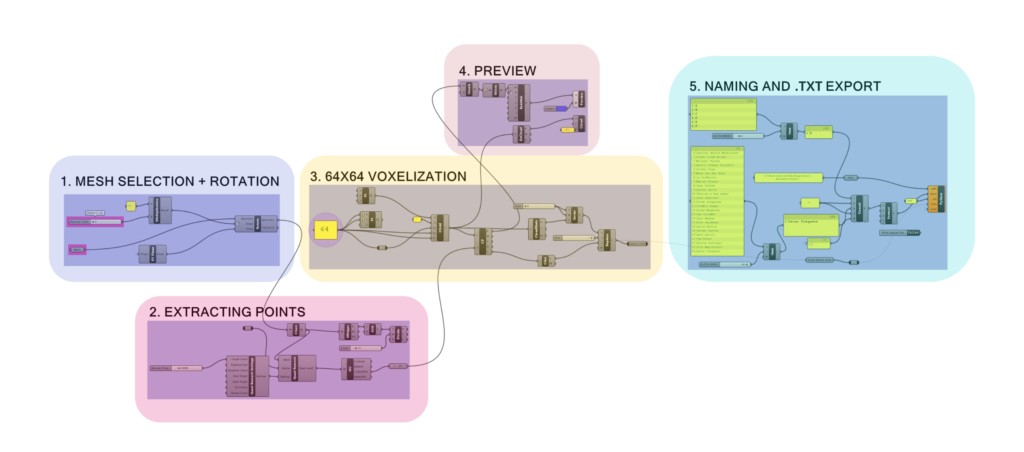
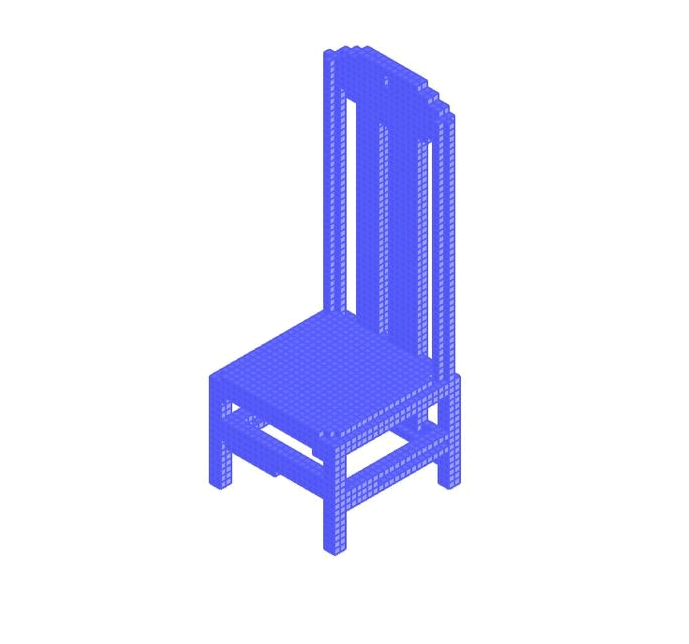
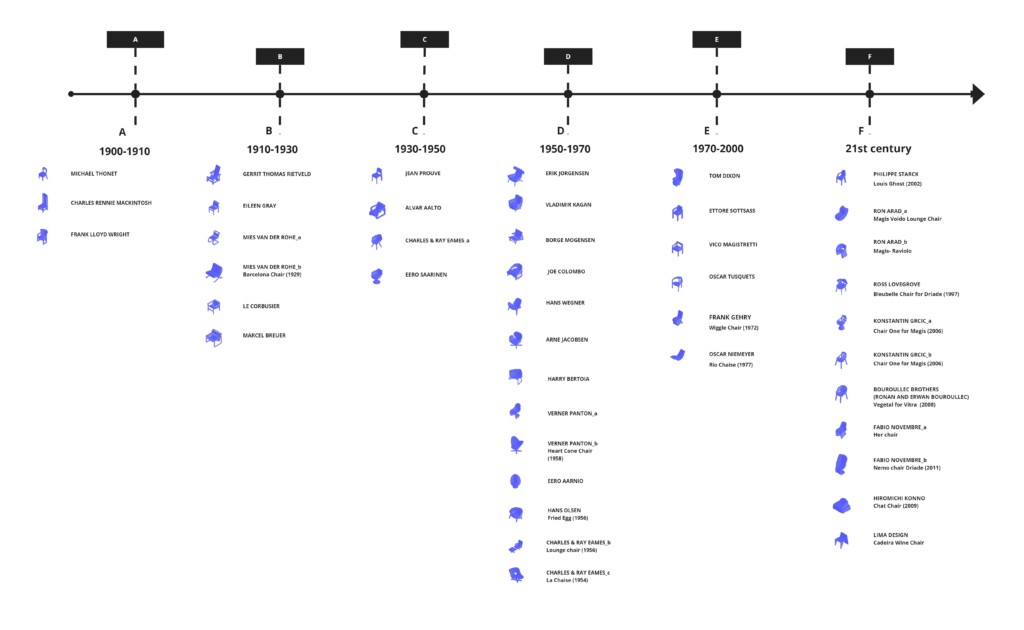
Through this process we created binary csv files for 360 samples ranging over 6 eras. In order to be able to use these csv files for ML training they had to be converted into NPY files which store the shape and array necessary for the architecture. They could then be preview in python using additional visualisation libraries.
GENERATIVE ADVERSIAL NETWORKS: Chair training
The main ML architecture used for this project is the GENERATIVE ADVERSIAL NETWORKS. This architecture works by estimating the generative models using samples between real models through discriminating between the real and fake samples created. This is taken through a neural network to output a binary result. The balance between the parts pushes both models to improve over time. The other part of the GAN consists of the encoder and decoder which down samples this original input to 0s and 1s.
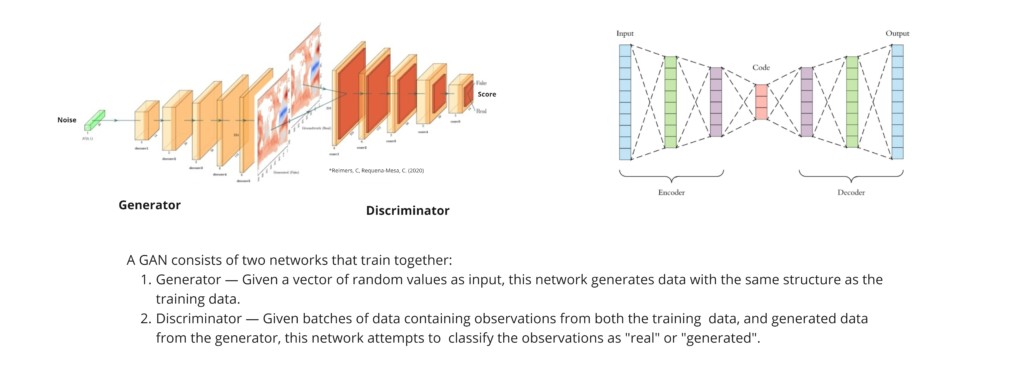
The discriminator part of the architecture trains to become better to distinguish what is better and what is fake while the generator is at the same time trained to start from noise and create images which is better at fooling the discriminator. This balance pushes both models to improve over time. Within the dense layer architecture of this model Convolutions are setup so the input number gradually increase to the number used in the training set and then decreased in similar manner, In our case they are centred around the 64 x 64 x64 voxel models.

Through this process we improved our training through the use of batches and loading checkpoints
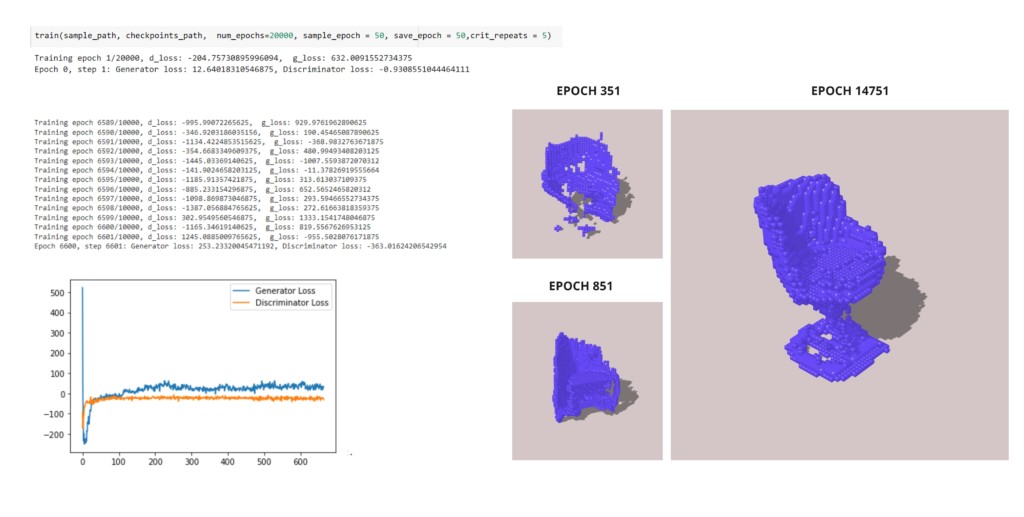
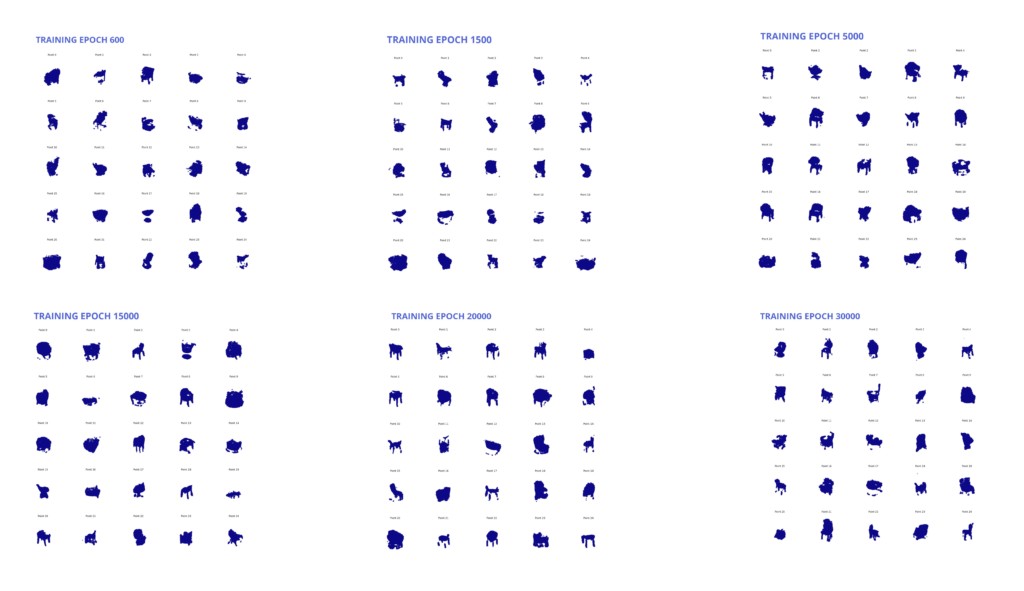
LATENT SPACE: Chair interpolations and creations
With this we were then free to explore the latent space by selecting samples manually and manipulating them as we saw fit. In these examples we filtered out samples which had legs and those that were more organic in nature. These voxel samples were then manipulated by averaging, subtract and adding parts together to create new designs.
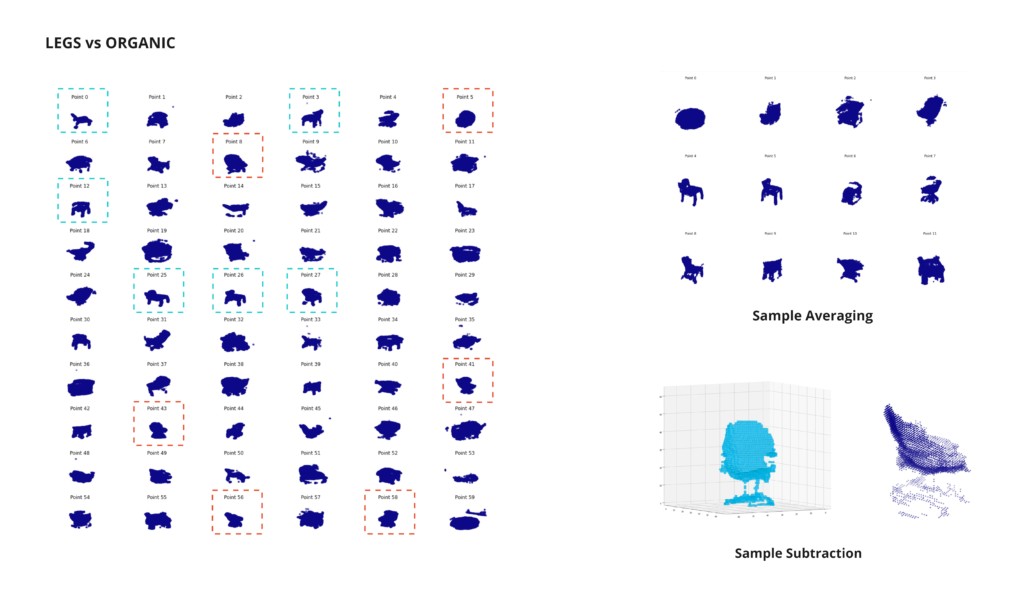
We went a step further by testing interpolations between two extreme examples like here with classic and modern chairs. And then again with chairs that had a high design and low.
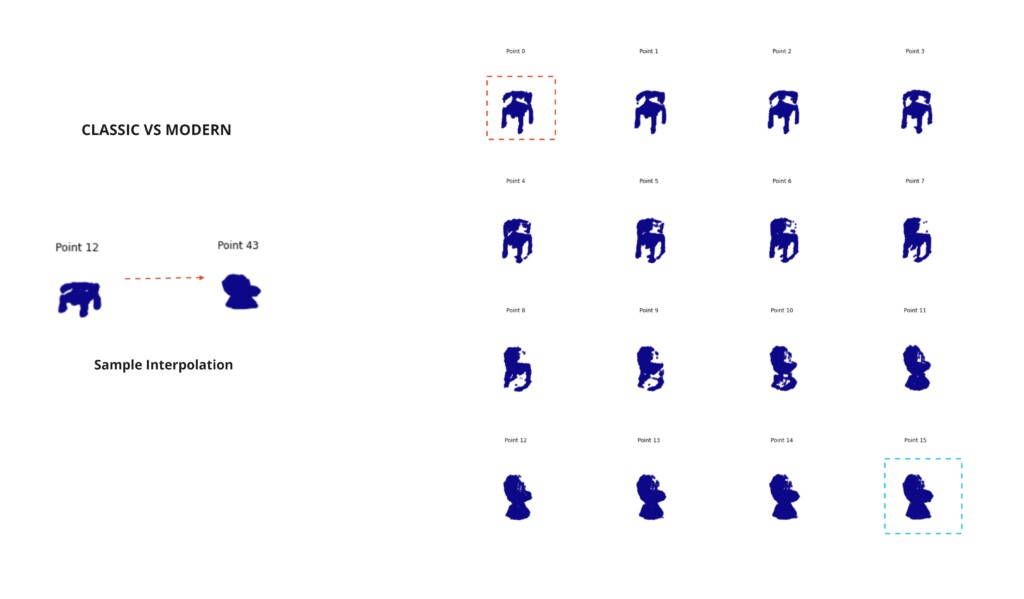
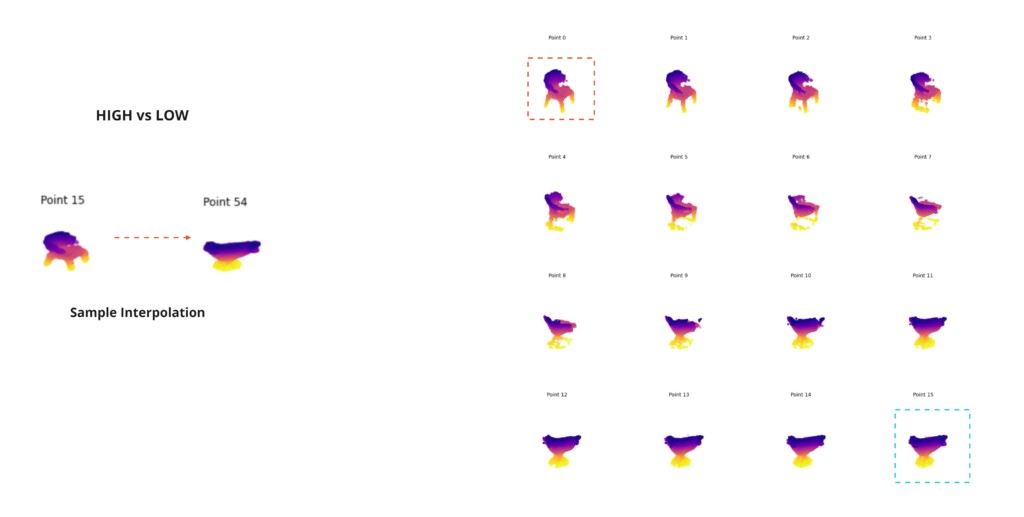
All these techniques were used to create new design variations from the latent space sculpting various forms.
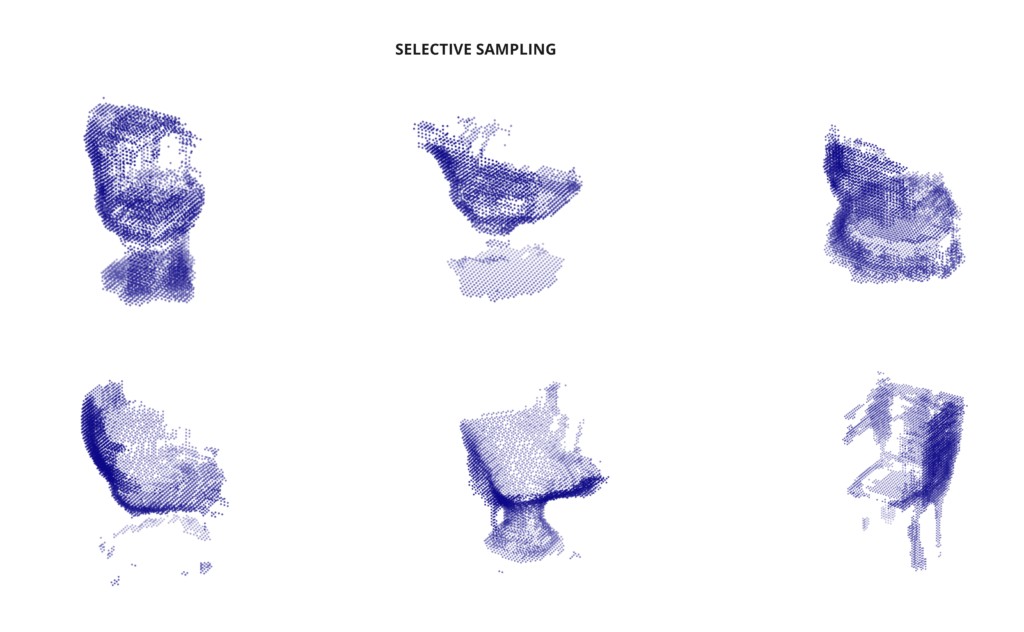
FURTHER STEPS: Conditional GAN and improvements
- Train for more epochs in order to achieve better results for the final interpolations
- Try different types of 3D GANS
- Complete the process for using Conditional generative adversarial networks (CGANs) in order to take advantage of labels during the training process
- Try different layers, hyper-parameters, number of filters, neurons etc.
- Try the same loop for other case studies
Ch-AI-r convergence is a project of IAAC, Institute for Advanced Architecture of Catalonia developed in the Master of Advanced Computation in Architecture and Design 2021/22 by Students: Michal Gryko and Maria Papadimitraki, Faculty: Oana Taut, Faculty assistant: Aleksander Mastalski
